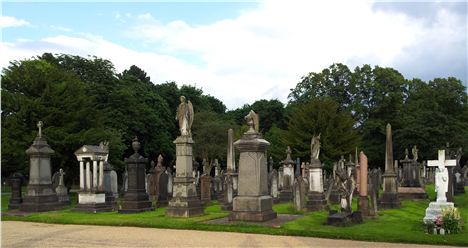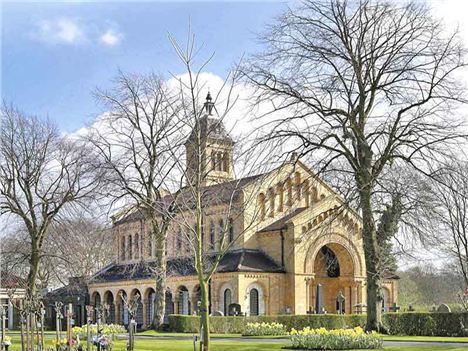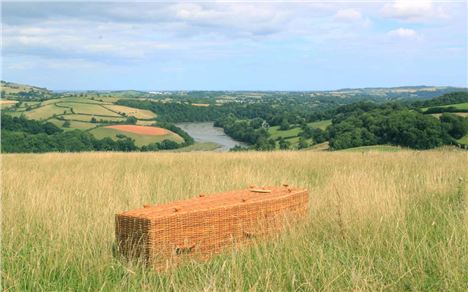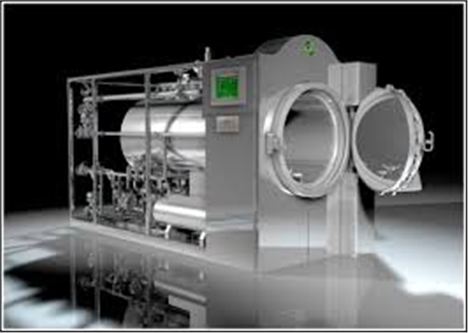THE pursuit of knowledge, insofar as it relates to funerals, saw me sat in Chorlton Unitarian Church for a 'Coffin Morning' the other week.
The wooden floorboards and the dust motes dancing slowly on a beam of light sent me straight back to Sunday school. Proust may have his madeleines, but for me it’s church halls every time.
Promession is the alternative to traditional burials if you’re a fan of Terminator 2. For your very own Judgement Day, you will be dipped in liquid nitrogen until brittle, then shaken until you break into pieces and then buried.
Tea and coffee were supped as everyone explained the reasons that had led them to investigate funerals that were a little different from the norm.
Southern Cemetery
Listening to everyone together was very moving, but there was a note of levity when I noticed one of the participants wearing socks bedecked with dancing skeletons. An appropriate but amusing reminder of our mortality.
Rosie Grant, from Natural Endings Funeral Services, then talked us through the dos and don’ts of sending off the dearly departed. Although there are rules, there are not so many as you might think and it seems very much a case of anything goes.
 Suitable socksUnlike wedding venues, there is no requirement to hold a licence for a funeral ceremony. It can be held in a bar, a barn or your own front room. Wherever you want, really. You can say what you want, sing what you want or shut up and have a service of silent reflection.
Suitable socksUnlike wedding venues, there is no requirement to hold a licence for a funeral ceremony. It can be held in a bar, a barn or your own front room. Wherever you want, really. You can say what you want, sing what you want or shut up and have a service of silent reflection.
At the moment, to burn or to bury are the only options when it comes to dealing with our mortal remains. Cremation is by far the most popular choice with more than two thirds of us opting to go up in smoke. It’s cheaper than buying up a family plot in the local graveyard at around half the price of a burial – not even including the headstone.
In France, even now, the majority of people, particularly the older ones (and they’re the ones who do most of the dying) are still squeamish about incinerating the body. Which results in less than a third of funeral services involving cremation but in the UK it has been gaining in popularity since the late Victorian times. It’s got more to do with necessity than anything else. With rising populations, graveyards were becoming, quite literally, full to bursting.
However, a certain squeamishness with regards to cremation is taking hold in this country too. Not to do with the journey of the body after death this time, but more to do with its carbon footprint. The fire needed to consume the average body and box requires about 30 cubic litres of gas – enough to keep your house warm and toasty for 17 hours.
As well as the fossil fuels used up, it’s the amalgam in people’s fillings that give environmentalists something to get their teeth into. When burnt, these give off toxic gases and although most crematoria now have filters built in to their chimneys to deal with this problem, about a third remain filter-free.
Manchester's Crematorium was only the second to be built in the country
Manchester Crematorium was, unsurprisingly, one of the first crematoria to update its equipment as you might expect from one of the pioneers in the field. Built in 1892, Manchester Crematorium was only the second crematorium to be built, after Woking in Surrey.
If it’s not burning, then it’s burial. Traditional burials are one option, as are burials at sea, but green funerals are growing in popularity. About a third of local funeral directors actively advertise green burials on their website. A quick round up includes but is not exclusive to: R Pepperdine and Sons in Chorlton; Kennedys Funerals in Northenden; Paul Williams in Whitefield; Ian Clarke in Sale Moor; Aidan Gaunt in Hyde; Broadoak in Swinton; Arthur Gresty with branches in Altrincham, Sale Moor and Northenden. And of course, Natural Endings in Northenden.
In general, everything that goes into the grave must be biodegradable and that includes the body. That means that bodies which have been embalmed cannot be buried in a woodland site. This is an important point to note as some funeral directors have an automatic embalming policy.
Embalming a body involves replacing the body’s fluids with a dilution of formaldehyde (think Damien Hirst) which sanitises the corpse and gives protection to staff who handle the body, but also preserves the body and makes it more presentable to the family, giving them a nicer, more lifelike memory to take away.
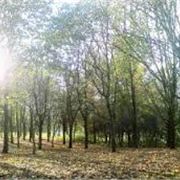 Blackley Cemetery's Woodland AreaYou can choose from wooded or rural areas within cemeteries such as those at Highfield Cemetery, Bredbury, Valley View Cemetery, Uppermill or Blackley Cemetery or private sites such as The West Pennine Remembrance Park near Entwistle, north of Bolton.
Blackley Cemetery's Woodland AreaYou can choose from wooded or rural areas within cemeteries such as those at Highfield Cemetery, Bredbury, Valley View Cemetery, Uppermill or Blackley Cemetery or private sites such as The West Pennine Remembrance Park near Entwistle, north of Bolton.
Some sites, where there is no chance of animal disturbance, practise shallow burials to speed up the decomposition process. Then there are others which opt for the traditional six feet under where decomposition occurs at a more leisurely pace – it’s all to do with the methane.
But it’s not just to do with the sites themselves. Green burials are also about the products. There is a vast array of different eco-coffins ready to return to the ground from whence they came. You can choose from woven wicker coffins that call to mind sunny days and picnic hampers, cotton caskets and some frighteningly garish cardboard coffins decorated with everything from red roses to red telephone boxes.
If the gradual process of death and decay seems a bit yucky then you might want to hold on and opt for a more futuristic way to go.
 Promession. Kind Of.Promession is the alternative to traditional burials if you’re a fan of Terminator 2. For your very own Judgement Day, you will be dipped in liquid nitrogen until brittle, then shaken until you break into pieces and then buried.
Promession. Kind Of.Promession is the alternative to traditional burials if you’re a fan of Terminator 2. For your very own Judgement Day, you will be dipped in liquid nitrogen until brittle, then shaken until you break into pieces and then buried.
Promession sounds a bit sci-fi to take over from burial or cremation, but it is based on nature. Wild animals tear bodies into smaller pieces (not in carefully tended churchyards obviously) which can then break up more easily. Promession is merely a hi-tech version of this but it might remain one for the techies amongst us, although it is used in Scandinavia.
Resomation, or bio-cremation is something that will probably be an option in our lifetimes. It’s already big in the Netherlands, where it has been found to be the funeral ceremony with the least impact on the environment and Co-Operative funeralcare are looking into it. Rather than being reduced to ash by fire, the body is chemically dissolved in a machine, leaving only a sterile ash behind – no carbon.
Again, The Recimator, makes the process sound like a cheap rip off of Arnie himself but resomation is also inspired by nature. The body is subjected to water and alkali at high pressure and high temperatures, which doesn’t sound overly natural, but in fact, this alkaline hydrolysis is the same process as that which takes place when a body is buried, just speeded up.
For me, the thought of pushing up the daisies in a peaceful country setting sounds like the way to go. But whatever you do, don’t bury me in a gaudy cardboard coffin made to look like an enormous box of chocolates.
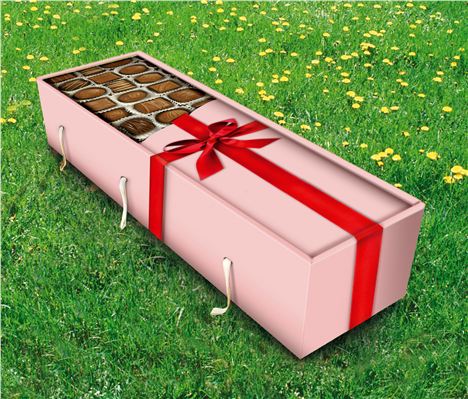 Death is like a box of chocolates. Apparently.
Death is like a box of chocolates. Apparently.
If you want to get in touch with Rosie from Natural endings, call 0161 969 6690 or go to their website here.









